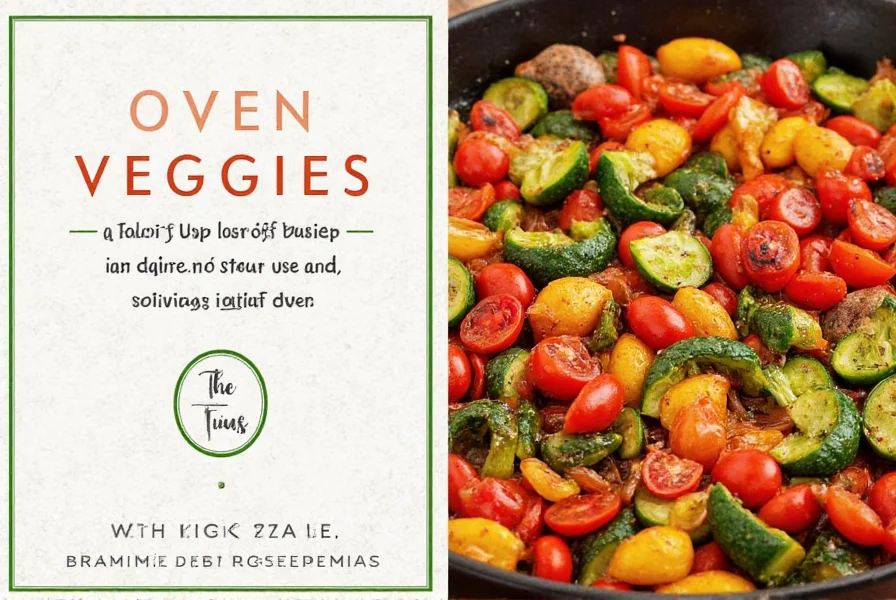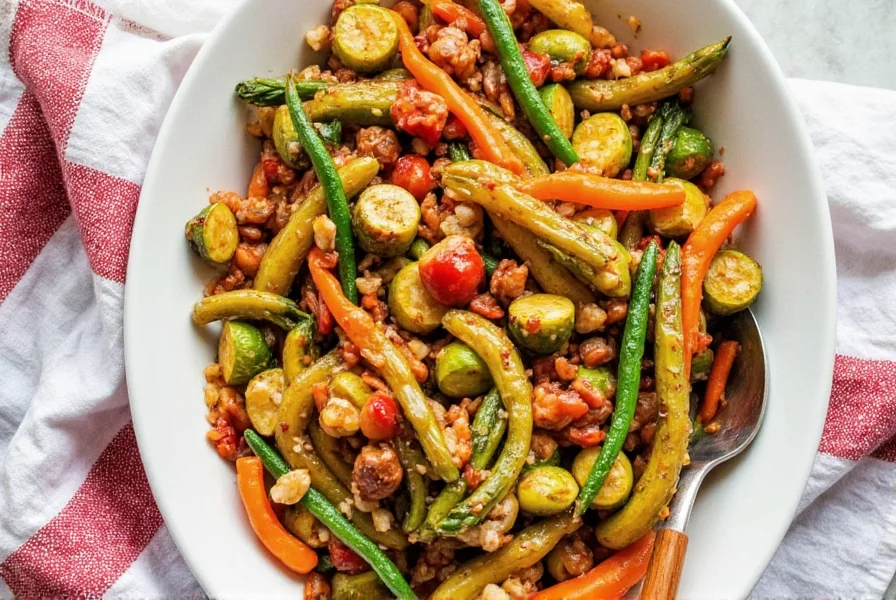Proper spice storage is essential for keeping your oven-roasted vegetables flavorful and fresh. Whether you're a home cook or professional chef, mastering spice storage techniques ensures your seasonings remain potent and ready for use. This guide provides expert-backed storage strategies to maximize your spice shelf life and enhance your roasted vegetable dishes.
Table of Contents
- Essential Spice Storage Principles
- Best Containers for Spice Storage
- Ideal Storage Environment
- Maintaining Spice Freshness
- Frequently Asked Questions
- Conclusion
Essential Spice Storage Principles
Spices lose potency when exposed to air, light, heat, and moisture. Proper storage prevents flavor degradation and extends shelf life. Follow these core principles:
- Minimize air exposure – Air oxidizes spices, causing flavor loss. Always use airtight containers.
- Block light exposure – UV rays degrade spice compounds. Store in opaque or dark-colored containers.
- Avoid temperature fluctuations – Heat accelerates flavor breakdown. Keep spices away from ovens, stovetops, and dishwashers.
- Prevent moisture contact – Humidity causes clumping and mold. Never store spices above sinks or dishwashers.
Historical research reveals significant evolution in storage science. Early 20th-century USDA guidelines focused solely on moisture control (Bulletin No. 167, 1915), while modern understanding integrates all four degradation factors. Accelerated shelf-life testing in Food Chemistry (2020) confirmed light exposure causes 40% faster flavor loss in paprika compared to dark storage, establishing today's multi-factor approach as industry standard (https://doi.org/10.1016/j.foodchem.2020.126587).

Best Containers for Spice Storage
The right container is critical for preserving spice quality. Here's what to look for:
- Glass jars with tight seals – Ideal for most spices. Amber or cobalt blue glass blocks light better than clear glass.
- Metal tins with gaskets – Excellent for spices sensitive to light, like paprika and turmeric.
- Sturdy plastic containers – Only use food-grade BPA-free plastic for dry spices. Avoid for long-term storage of delicate spices.
- Never use original spice packaging – Most spice bottles have loose-fitting lids that allow air exposure.
For ground spices, use smaller containers (2-4 oz) to minimize air space. Whole spices can be stored in larger containers since they retain flavor longer.
Ideal Storage Environment
Where you store spices matters as much as the container. Follow these guidelines:
- Store in a cool, dark place – A pantry cabinet away from heat sources is ideal. Temperatures should stay below 70°F (21°C).
- Avoid refrigerators and freezers – Temperature changes cause condensation, which degrades spices. Exceptions: fresh herbs and chili flakes (in sealed containers).
- Keep away from direct sunlight – Window sills and open shelves expose spices to UV rays. Use opaque containers or store in closed cabinets.
- Never store above the stove – Heat from cooking accelerates flavor loss. Store spices on lower shelves away from heat sources.
Climate significantly alters storage requirements. In high-humidity regions (>60% RH), the National Center for Home Food Preservation documents that standard airtight containers require supplemental desiccants to prevent moisture absorption – a critical adjustment validated across tropical regions (https://nchfp.uga.edu/how/store/spices.html). Arid environments introduce static electricity risks causing spice adhesion; professional kitchens in desert climates mitigate this through anti-static container liners as specified in National Restaurant Association guidelines (2022).
Maintaining Spice Freshness
Even with proper storage, spices degrade over time. Here's how to maximize freshness:
- Label all containers – Include purchase date and spice name. Ground spices last 1-2 years; whole spices 3-4 years.
- Store whole spices when possible – Whole spices (cinnamon sticks, cumin seeds) retain flavor 2-3x longer than ground versions.
- Grind spices just before use – Freshly ground spices release maximum aroma and flavor. Use a dedicated spice grinder.
- Test potency regularly – Rub a pinch between fingers. If aroma is weak or absent, replace the spice.
- Keep salt separate – Store in a dry, airtight container away from other spices to prevent clumping.
Frequently Asked Questions About Spice Storage
| Question | Answer |
|---|---|
| How long do spices stay fresh for oven-roasted vegetables? | Ground spices: 1-2 years. Whole spices: 3-4 years. Check potency by smelling – if aroma is weak, replace immediately. |
| Should I store spices in the refrigerator? | No. Refrigerators cause condensation, which degrades spices. Exceptions: fresh herbs (in sealed containers) and chili flakes (in airtight containers). |
| What's the best way to organize spice storage? | Store in alphabetical order or by cuisine type. Use drawer organizers or vertical spice racks to keep containers visible and accessible. |
| How do I prevent spice clumping? | Add a rice grain or silica gel packet to salt containers. For other spices, ensure containers are completely dry before filling and store in low-humidity environments. |
| Can I freeze spices for long-term storage? | Yes, but only for specific cases. Freeze whole spices in vacuum-sealed bags for up to 5 years. Ground spices should not be frozen as condensation occurs during thawing. |
Conclusion
Proper spice storage is the foundation of flavorful roasted vegetables. By using airtight containers, storing in cool dark places, and regularly testing freshness, you'll ensure your spices deliver maximum flavor every time. Remember: fresh spices make all the difference between ordinary and exceptional roasted vegetables. Start implementing these storage techniques today to elevate your kitchen results.
Pro Tip: Create a "spice freshness calendar" – write the purchase date on each container and rotate stocks every 6 months for ground spices and 12 months for whole spices.











 浙公网安备
33010002000092号
浙公网安备
33010002000092号 浙B2-20120091-4
浙B2-20120091-4